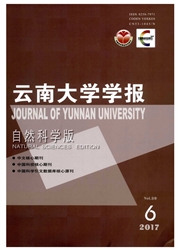

 中文摘要:
中文摘要:
利用欧洲中心(ECMWF)1957年9月到2002年8月共540月的ERA-40的经向风和臭氧质量混合比月平均资料,通过定义一系列Hadley环流指数来分析研究Hadley环流与臭氧的气候演变规律及其相互关系.分析指出:①在定义的几个Hadley环流指数中,北半球Hadley环流强度指数(NHCI)与臭氧的相关最好,全球Hadley环流指数(HCI)次之.因此进一步运用功率谱和凝聚谱方法对NHCI与臭氧的变化做出周期分析;②南半球臭氧的时间序列与Hadley环流各指数的相关关系最好,赤道次之,北半球相对小一些;③NHCI与臭氧之间的相关关系总体表现为明显的纬度带分布,说明了不同的纬度,平均经圈环流(MMC)对臭氧的输送作用不同.④NHCI与臭氧的季节变化都十分显著,二者之间有很多显著的共振周期,最突出的约为5~6个月,1 a的共振周期是各自变化的显著周期.臭氧的变化落后于NHCI振荡,且不同的纬度带落后时间长度不同.
 英文摘要:
英文摘要:
Based on the ECMWF ERA-40 meridional wind and monthly mean ozone mass mixing ratio data over the global for 540 months from September 1957 to August 2002.By defining a series of Hadley circulation indexes for analysis the evolutionary rule and interactions between Hadley circulation and ozone.The results show that.① Among the defined Hadley circulation indexes,the correlation between NHCI and ozone is best,while HCI-ozone correlation takes second place.So we use power spectrum and coagulation spectrum to study the periodic correlation between NHCI-ozone.②The correlations between each Hadley circulation index and ozone concentration time series over Southern Hemisphere is best and over equator take second place and over Northern Hemisphere is less.③ The main correlation between NHCI and ozone concentration is obvious latitude zonal distribution.It indicates that the transport for ozone driving by MMC is inconsistent in different latitude.④ Both NHCI and ozone's seasonal change are very obvious and there are many resonance periods between them.Five to six months is the highlight resonance period and one year period is their respectively obvious period.The change of ozone concentration lags behind NHCI resonance and the lag time is latitude-variation.
 同期刊论文项目
同期刊论文项目
 同项目期刊论文
同项目期刊论文
 期刊信息
期刊信息
